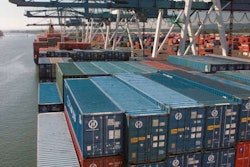Trucking news and briefs for Friday, Jan. 27, 2023:
Small plane hits tractor-trailer during emergency highway landing
A small plane struck a tractor-trailer last weekend while making an emergency landing on a highway north of Houston.
A Texas Department of Public Safety spokesperson said the plane apparently lost power as it approached the highway.
Investigators for the Federal Aviation Administration said in a statement that "the pilot of a single-engine Beech M35 reported engine problems and made an emergency landing on Highway 99 near Tomball, Texas, around 11:30 a.m. local time Sunday, Jan. 22. The aircraft clipped a trailer, hit a concrete barrier and caught fire after landing. Only the pilot was on board."
Tomball is located about 33 miles northwest of Houston.
Neither the pilot nor the trucker was injured in the collision. Neither was identified.
[Related: Trucker almost hit by plane on I-285 speaks]
NHTSA denies CVSA petition to remove rear impact guard label requirement
A 2019 petition by the Commercial Vehicle Safety Alliance asking the National Highway Traffic Safety Administration to amend the regulations related to rear impact guards on trailers has been denied.
CVSA asked NHTSA to remove the certification label requirement in the Federal Motor Vehicle Safety Standards (FMVSS) for three reasons:
- The certification label requirement, said CVSA, “is resulting in the citation of rear impact guards that otherwise meet the physical requirements and have no negative impact on safety,”
- That “certification labels frequently wear, fade or are removed during repair” and that “motor carriers are unable to obtain new certification labels from the original trailer manufacturers because they can no longer guarantee that the rear impact guard meets the FMVSS manufacturing standard,” and
- CVSA believes removing the certification label requirement would “eliminate confusion and inconsistency in enforcement,” which CVSA said would be beneficial, “while not negatively impacting safety as the physical components of the guard will still be inspected to the same standard during a roadside inspection.”
In denying the request, NHTSA said it believes removing the labeling requirement “could reduce the safety provided by rear impact guards on trailers and semitrailers.”

“Without the labeling requirement, it would be more difficult for NHTSA to identify trends that may indicate a particular rear impact guard contains a safety related defect,” NHTSA noted.
In reference to CVSA’s concern about certification labels wearing, fading or being removed during repair, NHTSA said it “does not believe that this indicates a current compliance issue with the requirements” in the FMVSS.
Fleet seeks waiver to install pulsating brake lights
Encore Building Products, which operates a fleet of 24 trucks out of Springdale, Arkansas, is petitioning the Federal Motor Carrier Safety Administration for an exemption from the requirement that lighting devices be steady burning.
The company wants to install a module manufactured by Intellistop that pulses the rear clearance, identification, and brake lamps from low-level lighting intensity to high-level lighting intensity four times in two seconds when the brakes are applied.
FMCSA in October denied an exemption request from Intellistop itself for an industry-wide exemption that would allow the module on all trucks. The agency noted, however, that individual carriers could still seek an exemption for using the system.
In Encore’s request, the company said the pulsating lights would “enhance rear signal systems” and “may significantly increase visibility and reduce the frequency of rear-end crashes.” Encore cited previous research from the National Highway Traffic Safety Administration that has shown pulsating brake lights appear “to significantly increase visibility of motor vehicles when decelerating and stopping, which should lead to significant reductions in rear impact crashes.”
FMCSA is accepting public comments on Encore’s request here through Feb. 27.
FMCSA in 2020 granted a waiver to the National Tank Truck Carriers to allow fleets to install a red or amber brake-activated pulsating lamp in the upper center position or in an upper dual outboard position on the back of tanker trailers, in addition to the steady-burning brake lamps required by federal regulations. The waiver granted to NTTC allows any carrier using tankers to install the lights. The waiver is effective through Oct. 8, 2025.










